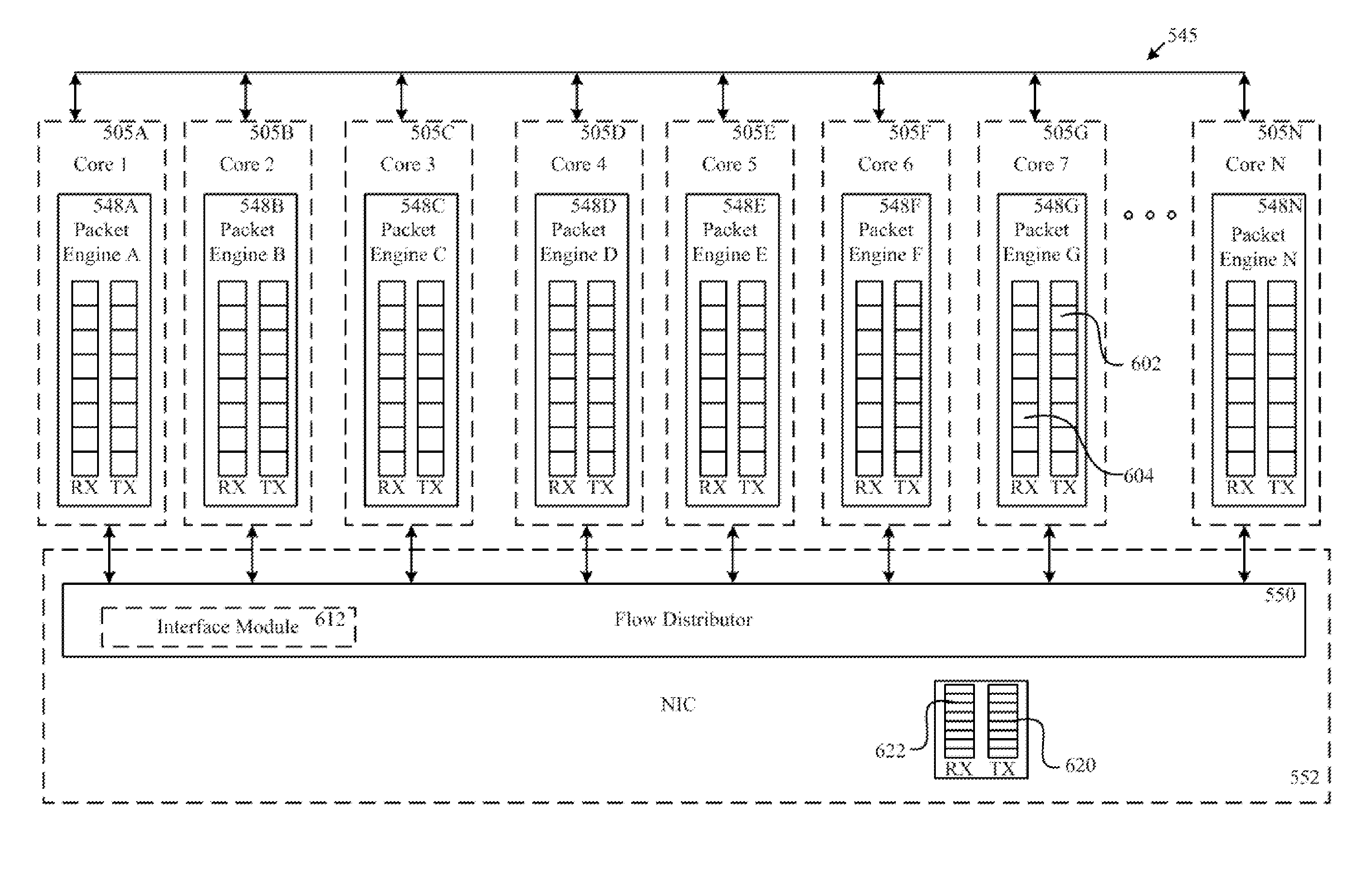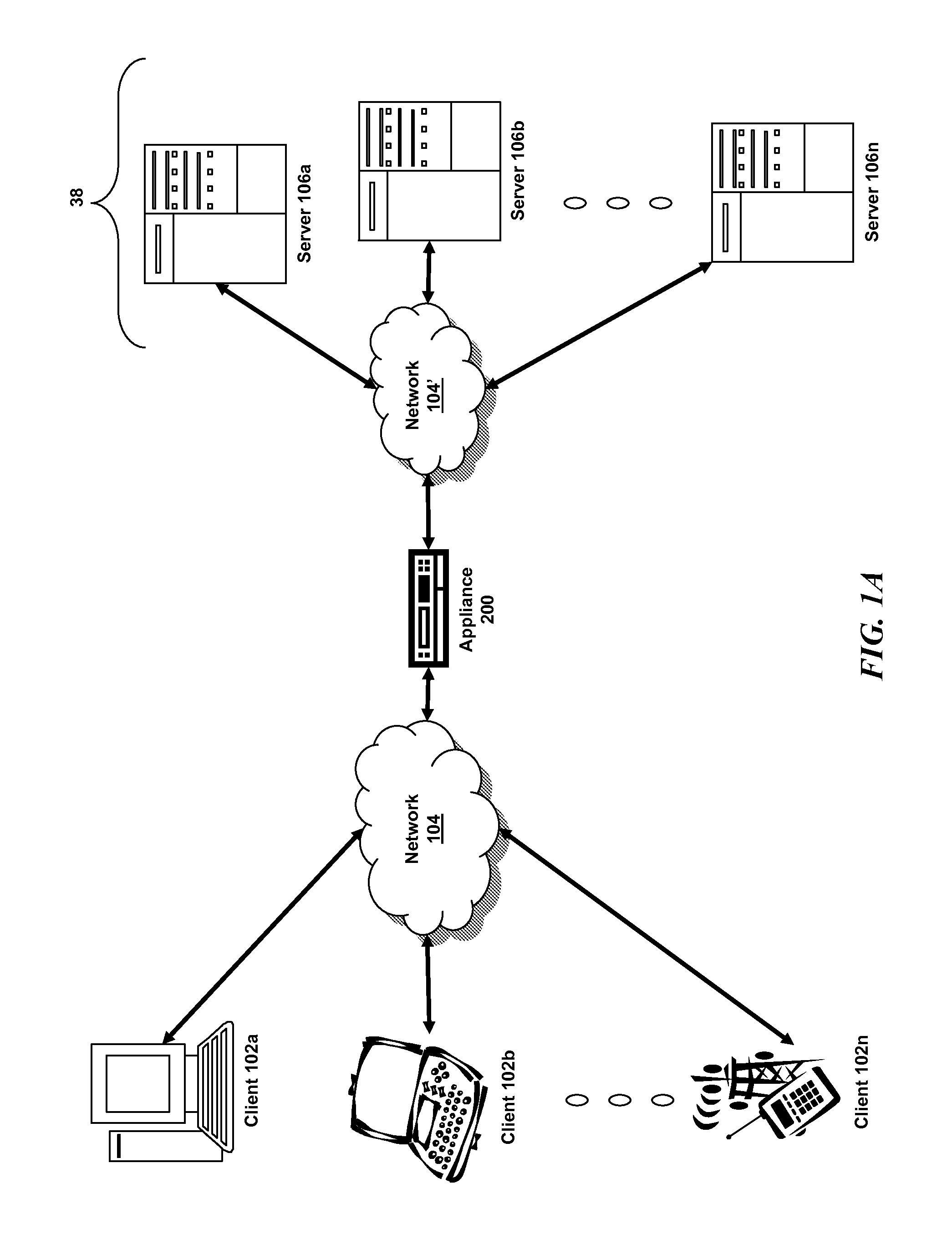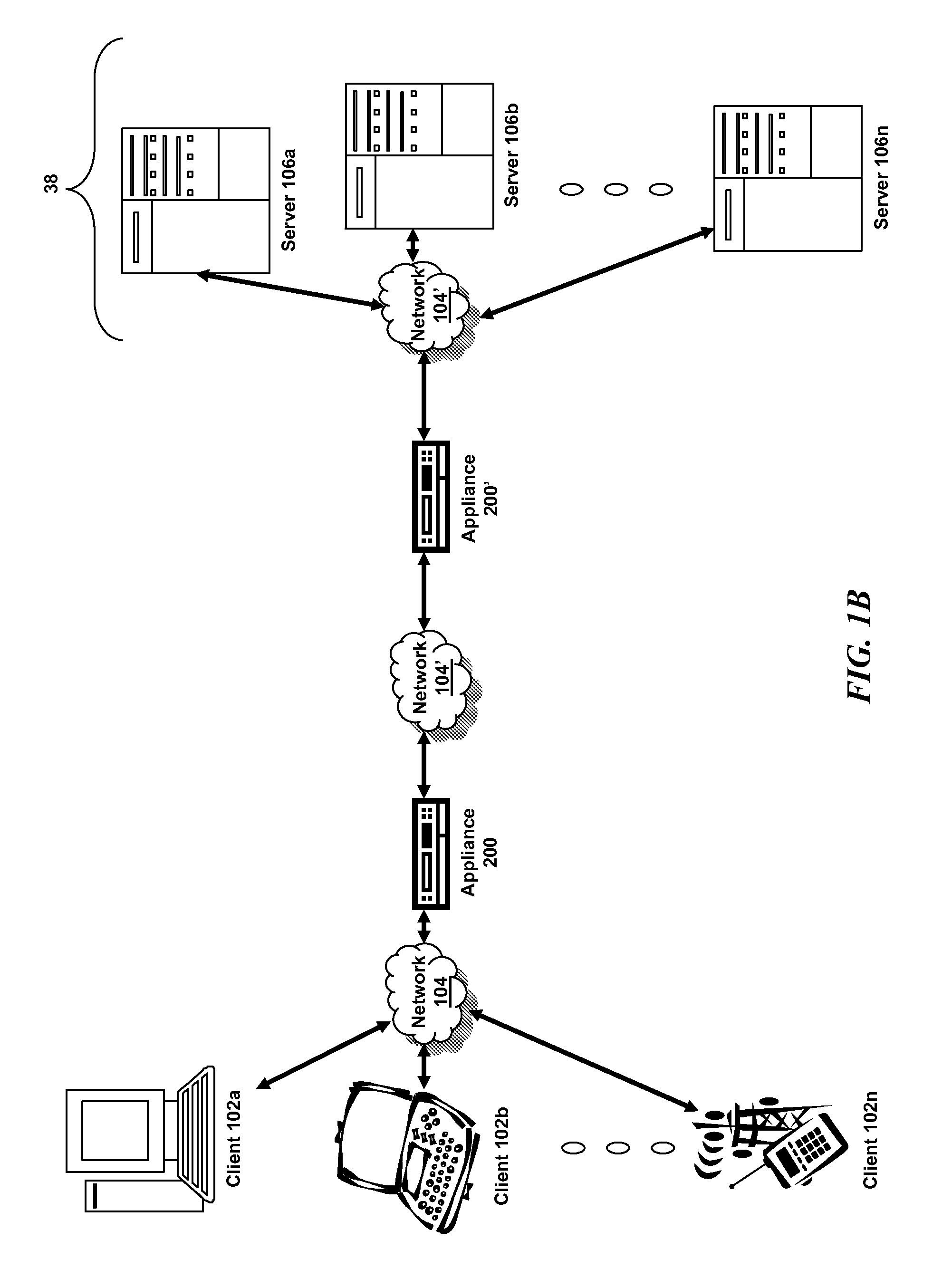Systems and methods for receive and transmission queue processing in a multi-core architecture
a multi-core, queue processing technology, applied in the field of data communication networks, can solve the problems of symmetrical or uneven distribution of network traffi
- Summary
- Abstract
- Description
- Claims
- Application Information
AI Technical Summary
Benefits of technology
Problems solved by technology
Method used
Image
Examples
example 1
IPV4
TCP / UDP
[0250]In this example, the tuple comprises a concatenation of the following values: source address; destination address; source port; and destination port. The tuple, or input string, can therefore be characterized by the following relationship: INPUT[12]=@12-15, @16-19, @20-21, @22-23. The entries @n-m identify a byte range, i.e. n=12, m=15, @12-15. The application of the hash to this input string is characterized by following equation:
Hash Result=ComputeHash(Input,12)
example 2
IPV4
Others
[0251]In this example, the tuple comprises a concatenation of the following values: source address; and destination address. The tuple, or input string, can therefore be characterized by the following relationship: INPUT[8]=@12-15, @16-19. The entries @n-m identify a byte range, i.e. n=12, m=15, @12-15. The application of the hash to this input string is characterized by following equation:
Hash Result=ComputeHash(Input,8)
example 3
IPV6
TCP / UDP
[0252]In this example, the tuple comprises a concatenation of the following values: source address; destination address; source port; and destination port. The tuple, or input string, can therefore be characterized by the following relationship: INPUT[36]=@8-23, @24-39, @40-41, @42-43. The entries @n-m identify a byte range, i.e. n=8, m=23, @8-23. The application of the hash to this input string is characterized by following equation:
Hash Result=ComputeHash(Input,36)
PUM
 Login to View More
Login to View More Abstract
Description
Claims
Application Information
 Login to View More
Login to View More - R&D
- Intellectual Property
- Life Sciences
- Materials
- Tech Scout
- Unparalleled Data Quality
- Higher Quality Content
- 60% Fewer Hallucinations
Browse by: Latest US Patents, China's latest patents, Technical Efficacy Thesaurus, Application Domain, Technology Topic, Popular Technical Reports.
© 2025 PatSnap. All rights reserved.Legal|Privacy policy|Modern Slavery Act Transparency Statement|Sitemap|About US| Contact US: help@patsnap.com



